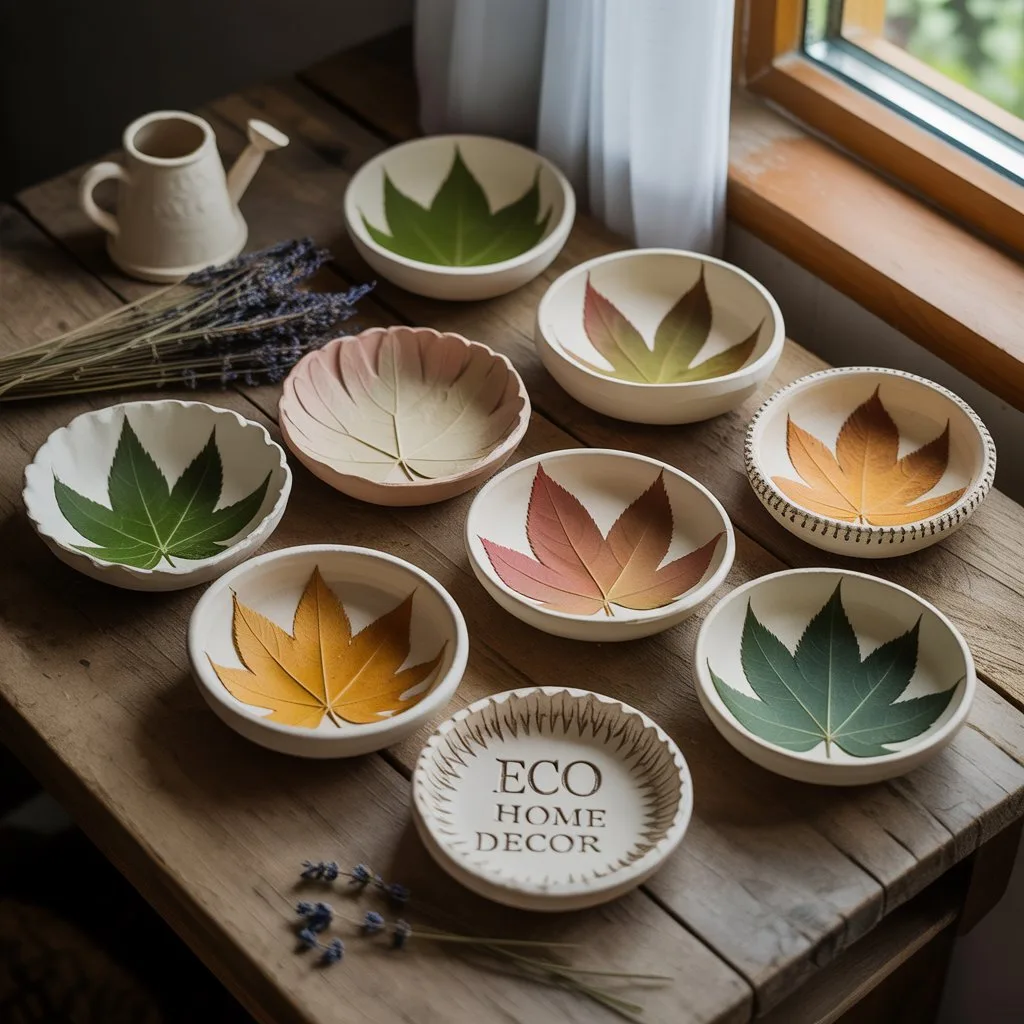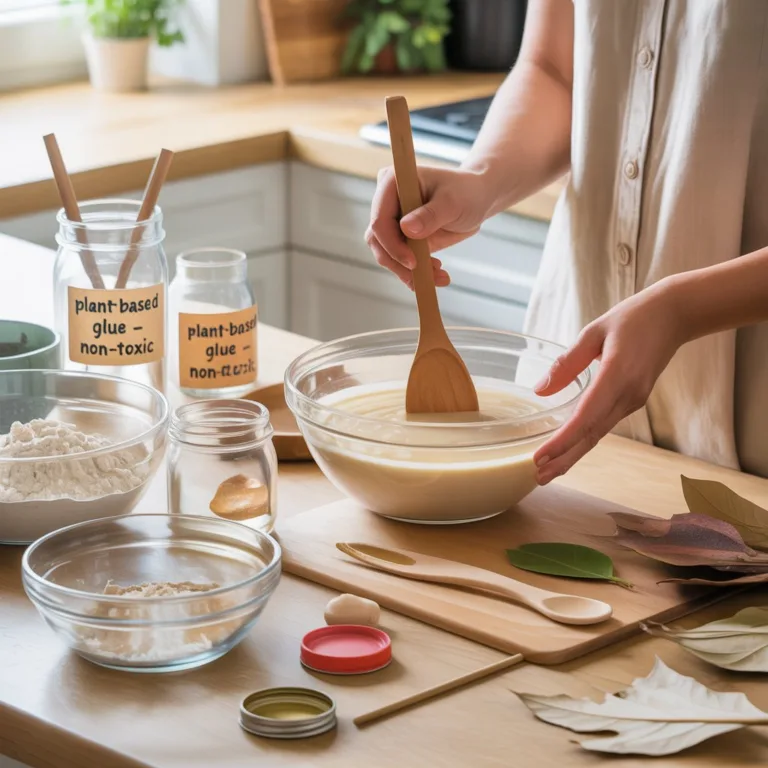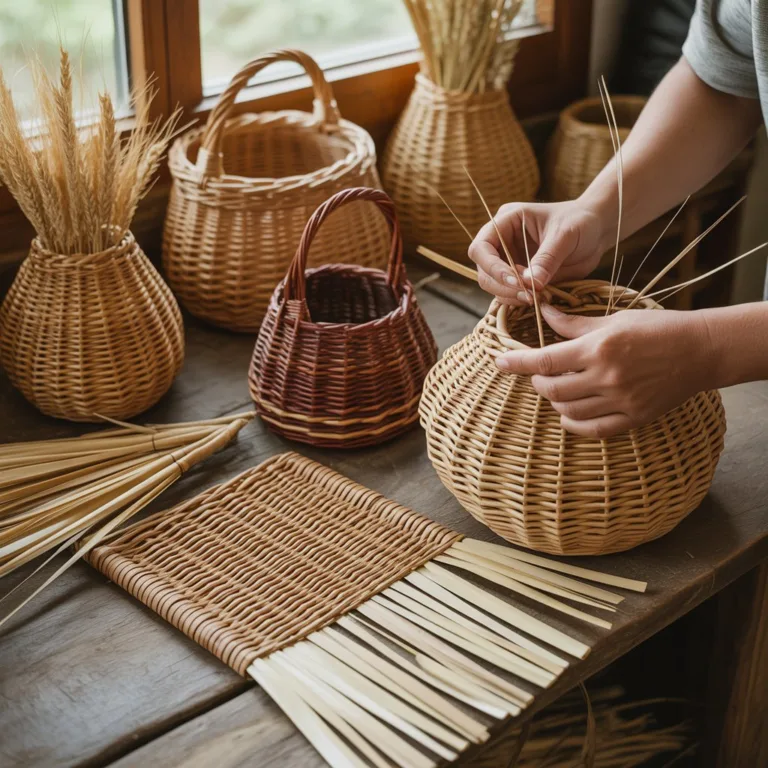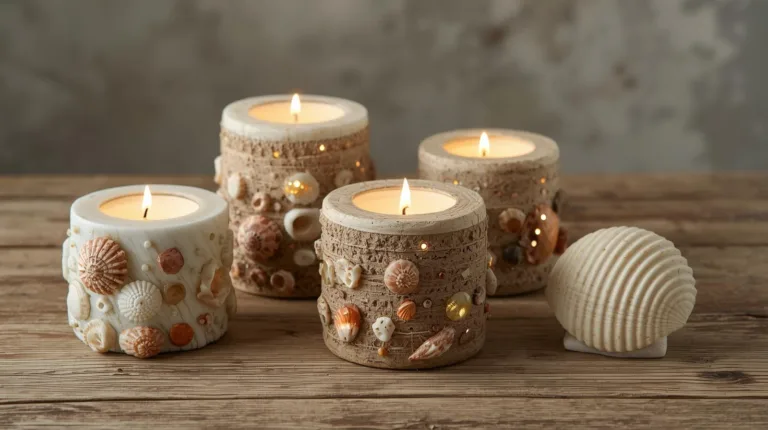Leaf-pressed clay bowls offer a creative and sustainable way to bring the beauty of nature into your home. These handcrafted pieces combine earthy textures with the elegance of pressed leaves, resulting in décor items that are both functional and aesthetically pleasing. By working with natural clay and foliage, you can design bowls that reflect your personal style while celebrating the organic forms and patterns found in nature.

Creating leaf-pressed bowls is an accessible craft for both beginners and experienced artisans. The process encourages mindfulness, creativity, and a deeper connection to the environment. These bowls are versatile—they can serve as decorative accents, holders for small items like keys or jewelry, or even as centerpiece elements for tables. Each piece is unique, as the imprint of every leaf is different, offering endless opportunities for artistic expression.
This guide explores techniques, materials, and tips for making leaf-pressed clay bowls. It provides detailed instructions, creative ideas, and insights into design principles, sustainability, and home décor applications. Whether you are looking to craft for personal enjoyment, gifts, or eco-friendly home décor, this article equips you with the knowledge and inspiration to start your project.
Selecting Materials for Leaf-Pressed Bowls
Choosing high-quality and sustainable materials is the foundation of crafting successful leaf-pressed bowls.
Natural Clay
Opt for air-dry clay or kiln-fired clay, depending on your tools and experience. Air-dry clay is convenient and doesn’t require specialized equipment, making it ideal for beginners. Kiln-fired clay offers more durability and a professional finish for long-lasting pieces.
Leaves
Select leaves with distinct shapes and textures, as these will create the most striking imprints. Consider using leaves from trees such as maple, oak, ginkgo, or ferns. Make sure leaves are clean, dry, and free of damage to ensure clear impressions.
Optional Materials
- Non-toxic clay paints or glazes for adding color.
- Sealants suitable for food-safe applications if the bowls will hold snacks or fruits.
- Rolling pins or smooth boards to flatten clay evenly.
- Brushes for smoothing edges and applying finishes.
Using sustainable materials ensures your bowls are eco-friendly and aligns your craft with environmentally conscious practices.
Tools Needed for Crafting
A few essential tools make the process of creating leaf-pressed clay bowls efficient and precise.
- Rolling pin for flattening clay evenly.
- Knife or clay cutter for shaping and trimming edges.
- Clay modeling tools or simple household items (like spoons or toothpicks) for refining edges and designs.
- Sandpaper or sponge to smooth rough edges after drying.
- Bowls or molds for shaping clay into curved forms.
- Paintbrushes for applying color, glazes, or sealants.
Having the right tools ensures that each bowl maintains a polished, professional appearance while preserving the natural patterns of the leaves.
Techniques for Leaf Pressing
Creating bowls with leaf imprints involves several key techniques that combine artistry with careful handling of natural materials.
Flattening the Clay
Begin by rolling out the clay to an even thickness, typically around 1/4 inch (6 mm). Uniform thickness ensures the bowl’s stability and allows for clear leaf imprints.
Pressing the Leaf
Place the chosen leaf onto the clay surface with the textured side facing down. Gently press using your hands or a rolling pin to transfer the leaf’s intricate veins and shapes onto the clay. Remove the leaf carefully to reveal the detailed imprint.
Shaping the Bowl
To create the bowl shape, you can mold the clay over a rounded object such as a small bowl, cup, or sponge. Smooth the edges and press gently to maintain the leaf imprint. Ensure the bowl has an even curvature for balance and aesthetics.
Drying and Hardening
Allow air-dry clay to cure completely according to manufacturer instructions, usually 24–48 hours. For kiln-fired clay, follow proper firing procedures. Slow, even drying prevents cracking and maintains the clarity of leaf patterns.
Finishing Touches
After drying, sand the edges lightly for a smooth finish. Apply non-toxic paint, glaze, or sealant to enhance the natural color of the clay and preserve the leaf impression. Consider clear coatings to highlight the leaf’s intricate details without altering its appearance.
Creative Design Ideas
Leaf-pressed clay bowls can be customized in numerous ways to suit different home décor styles.
Color Play
Use clay paints to enhance the natural colors of leaves or create contrast with the bowl background. Subtle earth tones like terracotta, sage green, or cream work well with natural textures.
Layering Leaves
Combine multiple leaf imprints on a single bowl for an artistic, layered effect. Experiment with overlapping or varying leaf sizes to create dynamic compositions.
Incorporating Patterns
Add simple geometric or organic patterns around the edges of the bowl to complement the leaf design. These can be etched with clay tools before drying or painted afterward.
Functional Variations
Create bowls in different sizes for serving purposes, display, or as organizers for small items. Smaller bowls work well for jewelry or keys, while larger bowls can serve as fruit dishes or centerpieces.
Educational and Mindful Aspects
Crafting leaf-pressed clay bowls offers benefits beyond aesthetics.
- Environmental Awareness: Working with natural leaves fosters appreciation for seasonal changes and biodiversity.
- Mindfulness and Relaxation: The process requires patience and attention to detail, promoting mental focus and stress reduction.
- Artistic Expression: Each leaf imprint is unique, encouraging creativity and personal design style.
- Fine Motor Skills: Handling clay and delicate leaves enhances coordination and dexterity, especially for young crafters.
This craft provides an opportunity to combine art, mindfulness, and environmental consciousness in a meaningful activity.
Display and Use in Home Décor
Leaf-pressed clay bowls can enhance the aesthetic of any living space.
- Table Centerpieces: Use a bowl as a decorative element filled with dried flowers, potpourri, or small ornaments.
- Organizers: Place bowls on desks or entryway tables to hold keys, coins, or jewelry.
- Wall Displays: Mount shallow bowls on walls as part of a natural, textured gallery.
- Gift Giving: Handmade bowls make thoughtful, eco-friendly gifts that showcase craftsmanship and care.
By integrating leaf-pressed bowls into home décor, you can celebrate natural beauty while promoting sustainability.
Caring for Your Leaf-Pressed Bowls
Proper care ensures your handcrafted bowls maintain their beauty and longevity.
- Avoid prolonged exposure to water or high humidity if using air-dry clay.
- Clean gently with a soft, dry cloth; avoid abrasive cleaners.
- If bowls are painted or sealed, follow instructions for non-toxic finishes.
- Store bowls in a stable environment to prevent cracking or warping.
Caring for these bowls not only preserves their appearance but also extends the life of your eco-friendly décor items.
Expanding Your Craft
Once you master leaf-pressed clay bowls, consider exploring related projects:
- Leaf-pressed tiles or coasters for functional home décor.
- Combining pressed leaves with resin for decorative trays or pendants.
- Creating larger centerpiece bowls with multiple leaf imprints for statement pieces.
- Experimenting with different types of clay, textures, and finishes to diversify your collection.
Expanding your skills allows for continuous creativity and a growing portfolio of nature-inspired décor items.
Creating leaf-pressed clay bowls is an enriching craft that merges artistry, sustainability, and mindfulness. Each bowl captures the delicate beauty of leaves, turning natural elements into functional and decorative objects. Whether for personal enjoyment, gifting, or enhancing eco-friendly home décor, these bowls celebrate creativity and the natural world.
By exploring textures, patterns, and colors, you can develop a distinctive style while contributing to a more sustainable approach to home decoration. Experiment boldly, cherish the uniqueness of each leaf imprint, and enjoy the process of bringing the beauty of nature into everyday life.

Lucas Hartman is a DIY enthusiast and sustainability advocate focused on natural crafts and eco-friendly home décor. With a background in arts and design, Lucas creates tutorials that help families and hobbyists transform everyday recycled or organic materials into beautiful, functional projects.



